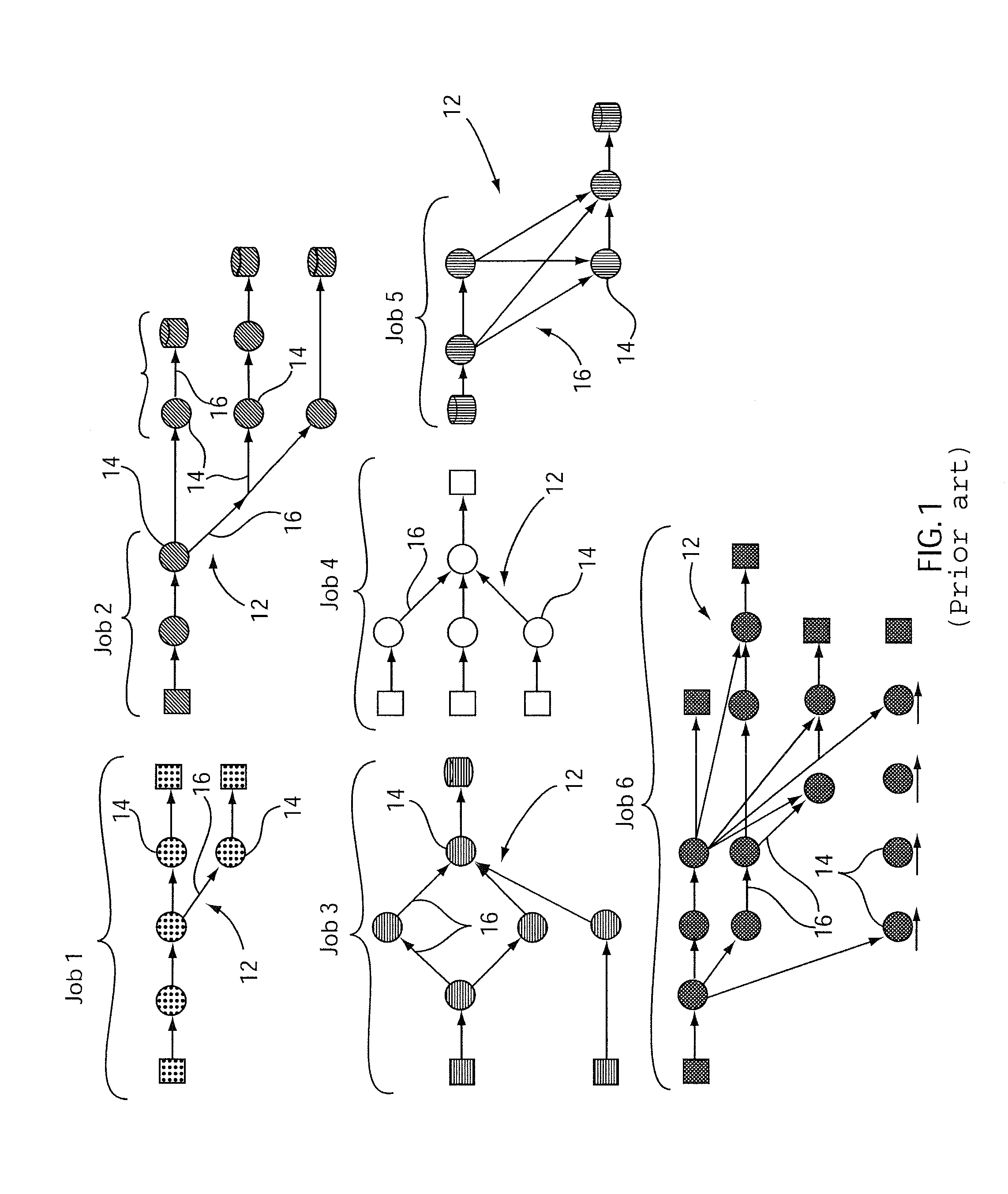Methods and systems for assigning non-continual jobs to candidate processing nodes in a stream-oriented computer system
a computer system and non-continuous work technology, applied in the direction of program control, multi-programming arrangements, instruments, etc., can solve the problems of system overloaded, arbitrarily complex precedence constraints, and enormous challenges in the design of future systems, and achieve the effect of reducing the penalty of non-continual jobs performed
- Summary
- Abstract
- Description
- Claims
- Application Information
AI Technical Summary
Benefits of technology
Problems solved by technology
Method used
Image
Examples
Embodiment Construction
[0044]Embodiments of the present invention include an epoch-based system and method for partitioning system resources between continual and non-continual jobs, choosing non-continual jobs, determining the start times and amount of resources for the processing elements of the chosen jobs, and creating a list of candidate processing nodes (PNs) for each of the processing elements (PEs) in a distributed stream-oriented computer system. In one particularly useful embodiment, a method is given a metric describing the penalty of the jobs as a function of time-based penalties of the PEs, precedence constraints among the PEs of the jobs, job priorities, and also security, licensing, resource matching and other rules for what constitutes an acceptable set of candidate PNs for a PE. A description of the current candidate nodes, a list of those candidate nodes which cannot be modified from their current values, and rules for the maximum amount of change permitted to these candidate nodes may a...
PUM
 Login to View More
Login to View More Abstract
Description
Claims
Application Information
 Login to View More
Login to View More - R&D
- Intellectual Property
- Life Sciences
- Materials
- Tech Scout
- Unparalleled Data Quality
- Higher Quality Content
- 60% Fewer Hallucinations
Browse by: Latest US Patents, China's latest patents, Technical Efficacy Thesaurus, Application Domain, Technology Topic, Popular Technical Reports.
© 2025 PatSnap. All rights reserved.Legal|Privacy policy|Modern Slavery Act Transparency Statement|Sitemap|About US| Contact US: help@patsnap.com



